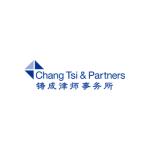In recent years, China has made significant strides in enhancing its IP protection. The WIPO’s Global Innovation Index Report 2021 revealed that China has risen steadily for nine years and now ranks 12th, following Germany and France. Judicial practice indicates that overseas companies, such as Qualcomm and Ericsson, have opted to pursue patent litigation in China. Chinese courts have also played an active role in shaping global IP governance rules by issuing anti-suit injunctions and asserting their jurisdiction over SEP's global rate, further cementing China's position as a preferred destination for international IP litigation.
To create a more IP-friendly business environment, Chinese lawmakers reviewed and further made amendments to the China’s Patent Law (CPL) in 2020. The amendments came into effect on June 1 2021. With regard to the new CPL, three key points are likely to have a significant impact on patent litigation.
Increasing the amount of damages for patent infringement
Chinese courts have traditionally granted damages that are under $100,000, with only 0.1% of cases receiving over $1 million. There are two main reasons for this. First, China adopts the principle of equalisation, and the damage compensation obtained by the patentee shall not exceed its actual loss. Second, limited by the rules of evidence in China, most patentees do not have sufficient evidence to prove the amount of damages, which can only be determined by the court according to the statutory damage, with the maximum compensation being $144,800.
The new CPL increases the amount of damage by introducing punitive damage and increasing the amount of statutory damage.
Introducing punitive damage
To conform to China's policy of rigorously safeguarding IP, the new CPL surpasses equalisation and introduces punitive damage to further penalise patent infringement. If a court deems an infringer to have committed deliberate infringement, the court will award the punitive damage by one to five times on the basis of the regular damage.
It is worth mentioning that the maximum multiplier for punitive damages in China exceeds that of the United States. The imposition of substantial punitive damages is expected to effectively dissuade potential patent infringers.
Increasing statutory compensation
Under China's patent system, if a patent holder fails to provide sufficient evidence to prove the full extent of the damages incurred, the court may award statutory compensation. In practice, judges have applied statutory compensation in over 90% of cases. To increase the amount of damage, the new CPL increases the amount of statutory compensation from the previous range of $1400-$144,800 to a new range of $4300-$723,800.
In all, via this amendment, China hopes to protect a patentee’s IP by the combination of punitive damage and the increased statutory damage.
Summary
Following the release of the new CPL, there has been a significant surge in the amount of damages awarded in China. According to the 2022 China Patent Investigation Report issued by CNIPA, the proportion of cases where the patentee was awarded $723,800 or more saw a fourfold increase in 2021 compared to 2020. Moreover, there have been numerous cases of substantial damages being awarded in China.

Table 1: The percentage of patent litigation infringement cases at the highest thresholds of compensation or settlement payments
Therefore, when the patentee has sufficient evidence, Chinese judges are increasingly willing to award substantial damages, which undoubtedly gives the patentee more confidence in filing lawsuits in China.
Reducing the difficulty for patentees to prove damage amounts
The Chinese patent litigation system has faced issues with the production of evidence, particularly with respect to the collection of evidence for damages. To address this, the new CPL has introduced the rule of evidentiary obstruction, aimed at mitigating such difficulties.
In order to determine damage, China’s court can shift the burden of proof to the infringer in the event that the patent holder has exhausted reasonable efforts in producing evidence, and where key evidence, such as account books and other materials, is controlled by infringer. If the infringer does not produce the evidence accordingly, the court may determine damage as per the claim of the patent holder and evidence provided by them. This is the Chinese ‘discovery’. It should be noted that the rule of evidentiary obstruction is only applicable to the calculation of damage, not to determination of infringement or invalidation procedures.
Immediately after the new CPL, the Supreme People’s Court of China (SPC) applied the rule in the patent infringement case of Switzerland Synthes GmbH v. China Double Medical Technology Inc. The first instance court of awarded damage of RMB 1 million (approximately $143,410) based on statutory compensation. Later, the SPC held that the infringer’s refusal to submit the corresponding account books and financial information in its possession constituted an evidentiary obstruction, and changed the judgment of first instance and fully supported the holder’s claim for damage of RMB 2 million. This case demonstrates the determination of Chinese courts to apply the rule of evidentiary obstruction, and also reflects the judicial attitude of Chinese courts to equally protect rights holders at home and abroad.
Strengthening design protection
In the past, there were three obvious problems in China's design protection: first, it could only protect the product as a whole; second, the protection period of the design was lower than that of the world's major countries; third, the applicant could not claim domestic priority. The new CPL has made significant changes to address these issues.
Increasing the protection of partial design
Prior to the implementation of the new CPL, the protection of product design was limited to the entire design. As a result, when an infringer modified non-design parts of the product, it was relatively easy to circumvent infringement. Additionally, the scope of protection was limited to physical products, thereby restricting protection for products that employed graphical user interfaces (GUIs). This limitation made it difficult to protect GUI designs and products that utilised GUIs.
The new CPL adds a partial design to the definition of design. An applicant may submit a view of the product as a whole by indicating with solid lines those parts requiring protection and with dashed lines those parts not requiring protection.
Partial design prevents the infringer from modifying the non-design parts of the product to avoid infringement, and allows the patent holder to more comprehensively protect the design innovation of its product.
Extension of protection period for design patents
In the past, the protection period of design patents in China was ten years, but the new CPL extends it to 15 years. China made this revision mainly to join the Hague Agreement on the International Registration of Industrial Designs in the future. After joining the Hague Agreement, applicants will save a lot of application fees and time.
Designs increasing domestic priority
Since the previous design application has no domestic priority, if the patent holder makes new changes to the submitted design, the new application will likely not be granted when it is submitted again because the two applications belong to the same design.
The domestic priority system for design applications has been introduced in the new CPL. After filing a design application, the applicant can submit another design application within six months and enjoy the priority of the earlier application. Therefore, the applicant may, within six months of filing the first design application, submit a similar improved design again and enjoy the priority of the former, and combine the two into one multiple design application. This way, both the first submitted design and the improved design can be protected.
Summary
Using the rear-view mirror as an example, the benefits and changes resulting from the introduction of partial design and domestic priority to China's design application strategy can be illustrated.
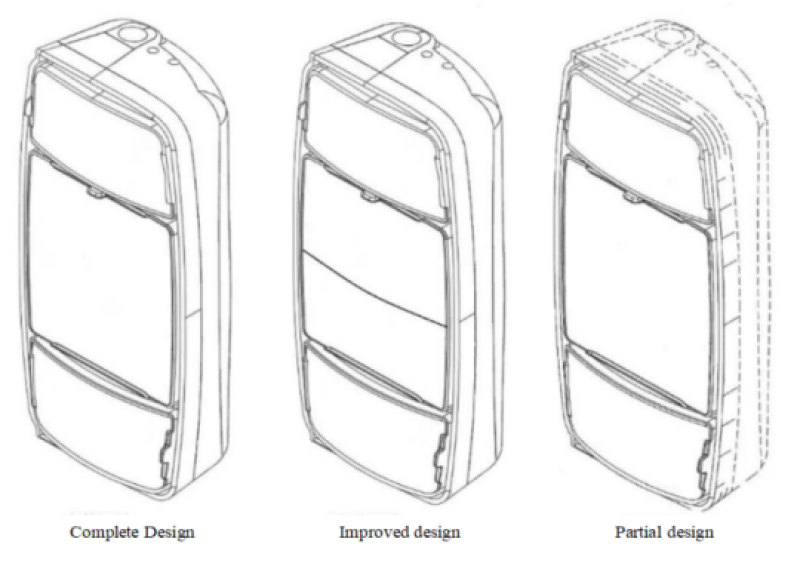
Figure 1: Product design drawing of rearview mirror
After the design of the rear-view mirror is finalised, the applicant may file a design application for either the entire rear-view mirror or the mirror surface (partial). Within six months of filing the application, if the applicant has any improvements to the whole of the rear-view mirror or the mirror surface of the rear-view mirror, the applicant can also apply for the whole or partial design and claim priority.
The addition of partial design and domestic priority gives applicants a relatively free application strategy. Applicants can adjust the content of the application through domestic priority and partial design to maximise the protection of their own products and adapt to the the trend of rapid iteration of the product. In addition, the extended design protection period and the free application strategy also give the holder more opportunities to enforce their design patent, considering the high success rate of holders in Chinese design patent litigation.
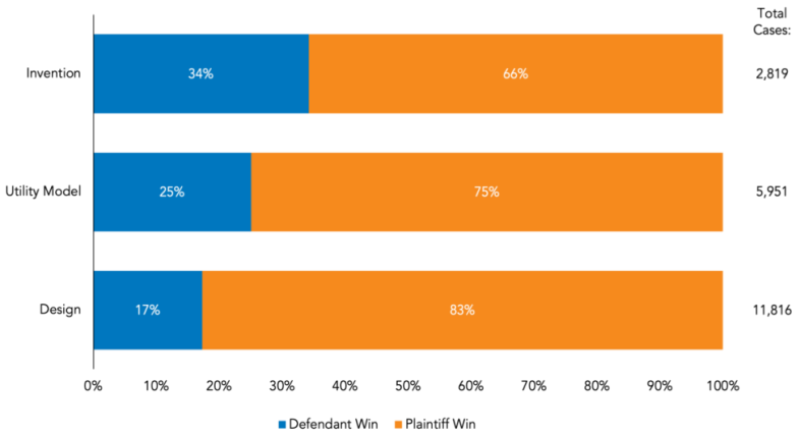
Table 2: Chinese patent infringement cases by outcome and patent type (Cases Closed 2010-2020)
Litigation advantages
Through continuous revisions to the Patent Law and other supporting laws and regulations, China has established a patent protection system that cannot be ignored on the world stage. As a result, an increasing number of patent holders are opting to initiate patent litigation in China.
Compared with jurisdictions with strong protection of IP rights such as Europe and the US, the cost of patent litigation in China is low. In addition, judgments are more favorable to patentees, and there are many different types of injunctions in China. Since China's injunction system is very distinctive, it will be highlighted in this section.
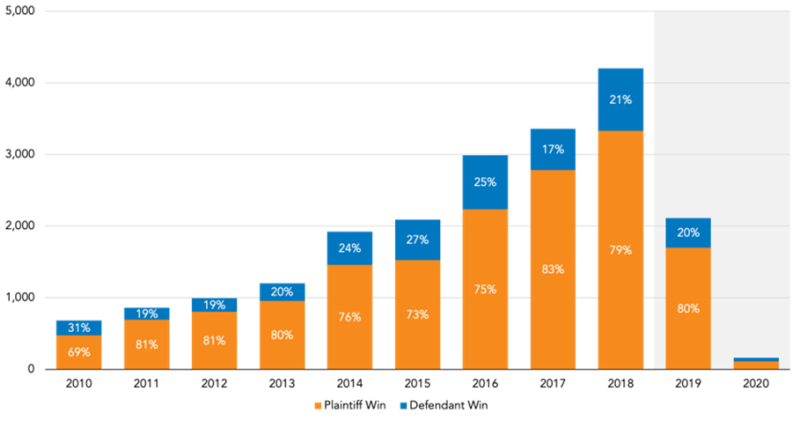
Table 3: The winning rate of plaintiffs and defendants in patent litigation in China from 2010 to 2019
China's IP protection is a dual-track system of ‘judicial and administrative’, so Chinese injunctions are also divided into court and administration.
Court injunctions are divided into preliminary injunctions and permanent injunctions. A preliminary injunction may be applied for before or during the lawsuit after the plaintiff has provided sureties. The court will make a judgment within a short period of time after receiving the application. Once the court orders a preliminary injunction, the defendant can apply for reconsideration, but the reconsideration does not stop the execution of the temporary injunction. Moreover, the preliminary injunction is generally not lifted even though the defendant provides sureties. A permanent injunction will be decided by the court after the lawsuit is over. In China's litigation procedures, it is the principle to award a permanent injunction after the infringement is identified, and the exception is no award. In practice, 90% of courts will award a permanent injunction after the patentee wins the lawsuit.
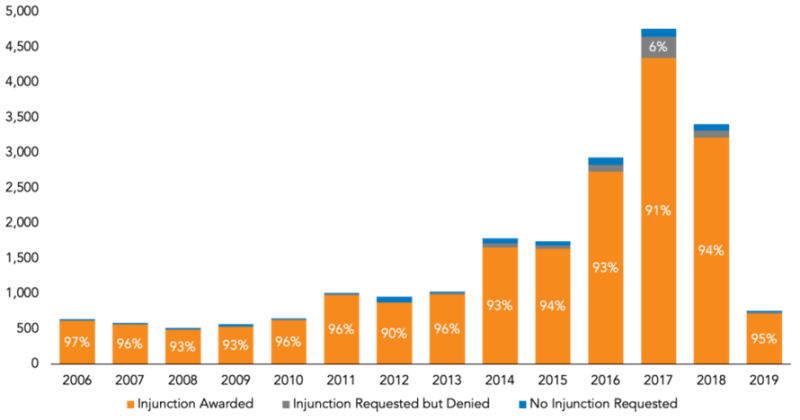
Table 4: Percentage of court injunctions obtained when plaintiffs win, 2006-2019
Administrative injunctions are issued by the China Patent Office in administrative procedures. China's administrative injunction has a short cycle and strong enforcement. In 2021, Boehringer Ingelheim of Germany filed an administrative ruling before China’s IP Office against Yichang East Sunshine Changjiang Pharmaceutical Co., Ltd. This is also a typical case of the Chinese government supporting the patentee of foreign companies.
In addition, China's injunction may not only prohibit the manufacture, sale and import of infringing products, but also prohibit the export of infringing products with the assistance of customs.
Therefore, compared with the US and Germany, China's injunction has at least five advantages:
More types: Patentees can apply for injunctions in various ways, increasing the possibility of obtaining an injunction;
Easier to get injunction: China's principle is to order an injunction after the infringement is identified. If it is identified as an infringement by the competent authority, the patent holder is very likely to obtain an injunction;
Strong execution: The Chinese injunction will not be affected by the defendant's sureties;
Short cycle: China's preliminary injunction and administrative injunction cycles are very short, and patentees can obtain them quickly; and
More prohibited actions: Since the Chinese injunction can request customs assistance, unlike the US and Germany, the Chinese injunction can also prohibit the export of goods.
In addition, foreign companies who initiate patent litigation in China are more likely to obtain an injunction as well as higher damage compensation.
Therefore, initiating patent litigation in China is indeed a matter worthy of serious consideration by foreign entities.
| Decisions | Infringed | Injunctions | Average damages |
Total | 1,663 (100%) | 1333 (80.16%) | 1,203 (90.25%) | CNY 75,942.39 ($12,368.47) |
Foreign patents | 115 (6.92%) | 97 (84.35%) | 90 (92.78%) | CNY 201,620.45 ($32,837.21) |
Domestic patents | 1,548 (93.08%) | 1,236 (79.84%) | 1,113 (90.05%) | CNY 66,217.93 ($10,784.68) |
Table 5: Comparison of patent litigation results between foreign and Chinese enterprises
